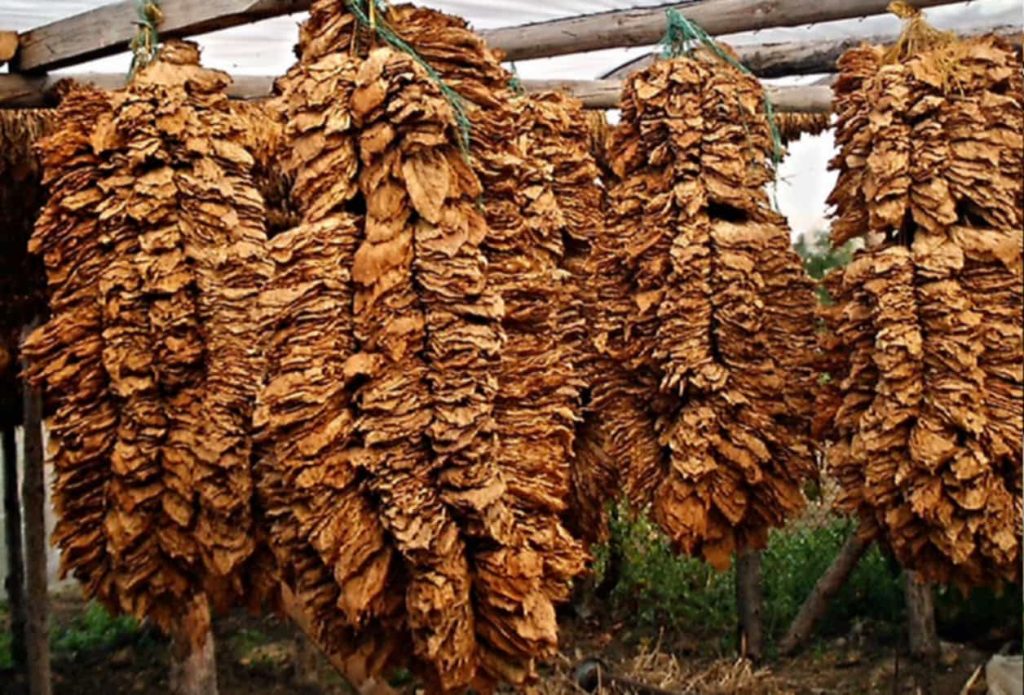
Step into the world of tobacco where each leaf tells a story of transformation. The art of curing tobacco is a dance with nature, a meticulous process that turns the raw, green leaves into a tapestry of taste and aroma. It’s not just about drying; it’s about awakening the very soul of the leaf, coaxing out the flavors that lie dormant within. This journey from the field to the final product is both an ancient tradition and a modern science, where patience and precision meet to create something truly extraordinary. Join us as we unravel the mysteries of curing tobacco, where every leaf is a chapter, every aroma a verse in the anthology of tobacco’s rich legacy.
Introduction to Curing Tobacco
Curing tobacco is an essential process in the production of tobacco products. It involves a series of controlled techniques that transform the harvested leaf into a consumable product with the desired flavor, aroma, and color. The history of tobacco curing dates back to indigenous practices, evolving over centuries into the sophisticated methods we see today.
The Curing Process
Understanding the curing process is crucial for appreciating the complexity of tobacco production. After harvesting, the leaves undergo color curing, where the goal is to change their color and reduce their chlorophyll content. There are four main methods of curing: air, fire, flue, and sun, each imparting distinct characteristics to the tobacco.
Detailed Curing Methods
Air-curing is a natural process where leaves are hung in well-ventilated barns, taking four to eight weeks to dry. This method is suitable for tobacco varieties like Burley, which are known for their lighter flavors and higher nicotine content.
Fire-curing involves exposing the leaves to smoke from a low-burning fire, resulting in tobacco with a smoky flavor, low in sugar, and high in nicotine. This method is ideal for producing pipe tobacco, chewing tobacco, and snuff.
Flue-curing is a technique where tobacco is cured in barns with controlled heated air. This method, taking about a week, is used for Virginia tobacco, which is known for its high sugar and medium-to-high nicotine levels.
Sun-curing, as the name suggests, involves drying the leaves in direct sunlight. This method is common in Mediterranean countries and produces tobacco with higher sugar and lower nicotine levels.
Modern Innovations in Curing
Technological advances have introduced controlled environment curing, which allows for precise regulation of temperature and humidity, leading to consistent quality. The future of tobacco curing may see further innovations that enhance efficiency and quality.
Cultural and Social Aspects
Tobacco curing is deeply rooted in various cultures, with traditional practices passed down through generations. The social impact of tobacco curing is significant, as it remains a communal activity in many parts of the world.
Conclusion
The art and science of curing tobacco are integral to the tobacco industry. Each method of curing plays a role in shaping the final product’s quality and character. As the industry evolves, so too will the techniques of curing, ensuring tobacco’s legacy continues into the future.
Technical Aspects of Curing Tobacco
The Process of Curing Tobacco
Curing involves several stages, including wilting, yellowing, coloring, and drying. These stages involve both physical and chemical changes in the leaf.
Different Methods of Curing Tobacco
There are several methods of curing tobacco, including air curing, fire curing, sun curing, and flue curing. The method chosen depends on the type of tobacco and the desired characteristics of the final product.
Statistics on Curing Tobacco
Global Trends in Tobacco Curing
Flue-curing is the most widespread method, accounting for approximately 90% of all tobacco curing.
Regional Differences in Curing Methods
Different regions may prefer different curing methods. For example, in Virginia, tobacco is typically flue-cured, while in other areas, such as for Burley tobacco, air-curing is more common.
Frequently Asked Questions on Curing Tobacco
What is the curing process for tobacco?
Curing is a process that transforms harvested tobacco leaves into a product ready for consumption. It involves several stages, including wilting, yellowing, coloring, and drying.
What are the main methods of tobacco curing?
The main methods of curing tobacco are air curing, fire curing, sun curing, and flue curing.
Why is tobacco curing important?
Tobacco curing is important because it significantly influences the final quality, flavor, and aroma of the tobacco.
Is there a difference in taste between cured tobaccos?
Yes, the method of curing can significantly affect the taste of the tobacco. For example, dark air-cured tobacco is fermented and has a bolder flavor and more distinct aroma compared to light air-cured tobacco.
Can tobacco curing be done at home?
Yes, tobacco curing can be done at home, although it requires careful control of the process to achieve the desired characteristics of the final product.
Where is tobacco curing practiced?
Tobacco curing is practiced in many regions worldwide, wherever tobacco is grown. This includes regions in the United States, Asia, Africa, and South America.
How long does tobacco curing take?
The duration of the curing process can vary depending on the method used. For example, air curing can take between four to eight weeks, while sun curing can take about two weeks.
Recommended Books on Curing Tobacco
For those interested in learning more about curing tobacco, “Growing and Curing Sun-Cured Tobacco” by W.W. Green and “Bradley’s Manual on Growing and Curing Tobacco” by William L. Bradley are recommended.
Sources of Information on Curing Tobacco
Reliable sources of information on curing tobacco include academic articles, books, and websites of reputable organizations in the field of tobacco research and production https://www.ikisan.com/tg-tobacco-curing.html
https://www.jstor.org/stable/1654697
https://totalleafsupply.com/frequently-asked-questions/
https://www.pmi.com/glossary-section/glossary/tobacco-curing.
Citations on Curing Tobacco
For further reading and research, the following sources provide valuable information on curing tobacco: https://www.ikisan.com/tg-tobacco-curing.html
https://www.jstor.org/stable/1654697
https://totalleafsupply.com/frequently-asked-questions/
https://www.pmi.com/glossary-section/glossary/tobacco-curing.